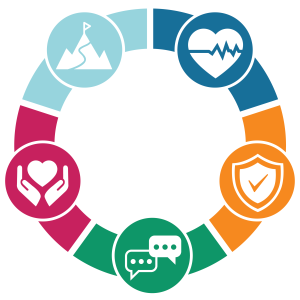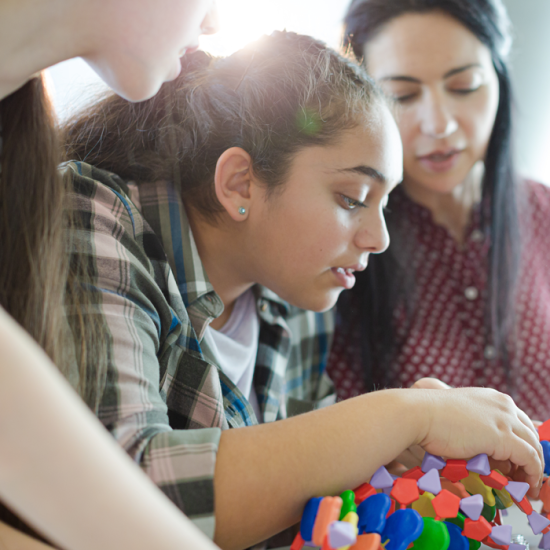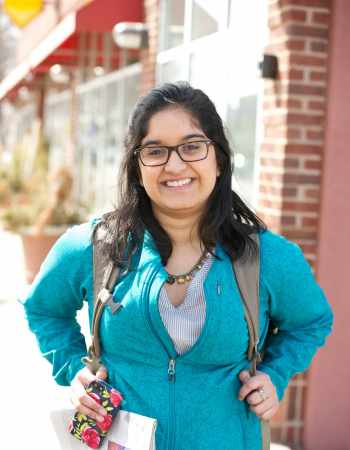A Holistic Approach to Supporting Young People in Minnesota
The Minnesota Student Survey has been an important source of information on the health, safety and academic success of young people for over 30 years. Wilder Research recently released Snapshots on Minnesota Youth: 2022 Minnesota Student Survey Whole Child Report. The report aligns 2022 survey findings with the holistic Whole School, Whole Community, Whole Child model that highlights the relationship between learning and well-being.
What is the Minnesota Student Survey?
The survey, administered every three years to students in 5th through 12th grade, asks about school climate and academics, participation in activities, relationships with peers and adults, physical, mental, and chemical health, and more. Public and private, tribal, charter, and online schools, alternative learning centers, and juvenile correctional facilities are all invited to participate.
Read more about ways data from the survey are used to support young people in Minnesota.
What is the Whole School, Whole Community, Whole Child approach?
The WSCC model emphasizes the roles that schools, health agencies, parents, and communities can play in supporting young people. The five tenets of the model include ensuring young people are:

- Healthy—physical and emotional health are fundamental to students’ overall well-being
- Safe—students need to feel safe to learn and thrive
- Engaged—engaged students have better academic outcomes
- Supported—supportive school environments and caring relationships can foster student motivation and engagement
- Challenged—Creating an environment of high expectations increases critical thinking skills and prepares them students for future pursuits
What did we learn about the well-being of young people from the 2022 survey?
The good news is that ninth grade trends revealed decreases in alcohol, tobacco, and marijuana use. Most students feel safe at home, in their neighborhoods, at school, and going to and from school. Nearly 9 out of 10 students say they have at least one adult they can talk to about problems they are having. Students who are healthy, safe, engaged, supported, and challenged are less likely to report symptoms of depression and past 30-day substance use, and more likely to report getting mostly A grades.
The not-so-good news is that only a small percentage of students meet both the recommendation of eating five or more servings of fruits and vegetables per day and at least 60 minutes of exercise per day. Past two-week rates of anxiety symptoms and depression symptoms increased. From 2016 to 2022, the data show declines among ninth graders in:
- Feeling safe at school—from 92% to 86%
- Being educationally engaged—from 77% to 60%
- Experiencing positive school climate—from 59% to 49%
- Feeling cared about by at least three groups of people (parents, other adult relatives, friends, teachers and other adults at school, and adults in the community)—from 73% to 64%
- Learning teamwork or leadership skills during out of school time activities—from 63% to 58%
What role can you play in supporting the well-being of young people?
Even if you are not a parent or caregiver, or directly supporting young people in a school setting, you can play a role in supporting young people.
- Support families with young people. Parents and caregivers who have the resources and supports they need are better able to ensure the well-being of their children. Listen to this recent conversation about ways Wilder and the City of St. Paul are taking a whole family approach to supporting families.
- Support schools. Encourage and support schools to implement and expand social and emotional learning programs and other evidence-based approaches that promote healthy development.
- Show that you care. Greet young people by name. Ask them how they are doing. Be one more adult they can talk to about problems.
- Encourage young people’s interests. Find out what young people are interested in and excited about, and encourage them to learn more about it. Volunteer as a mentor to help engage young people in learning outside of the school day. Challenge them to learn new skills. Engage young people in helping make decisions about things that impact them.
The 2021 U.S. Surgeon General’s report Protecting Youth Mental Health outlines action steps and resources that can be taken by multiple sectors.
Melissa Adolfson and Edith Gozali-Lee are research scientists at Wilder Research and were co-leaders of the 2022 Minnesota Student Survey administration. They conduct research and evaluation at the state and community levels. Melissa focuses on mental and chemical health, and Edith focuses on education and youth development. Both rely on data from the Minnesota Student Survey in their work.


